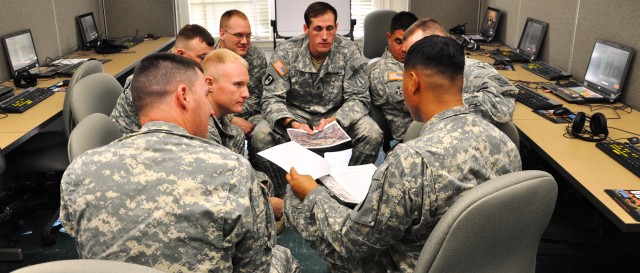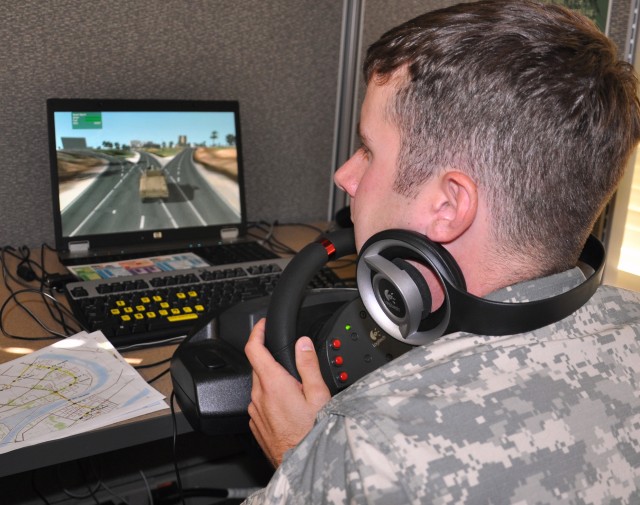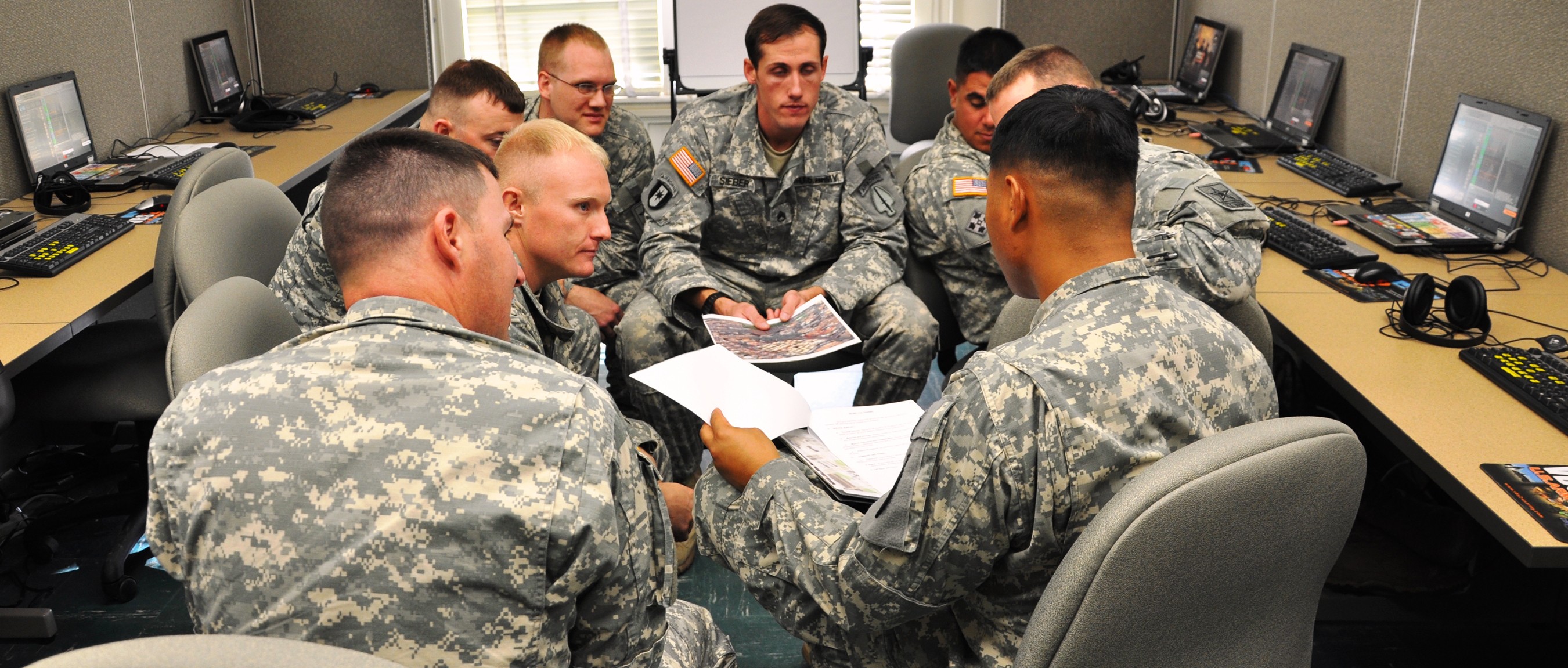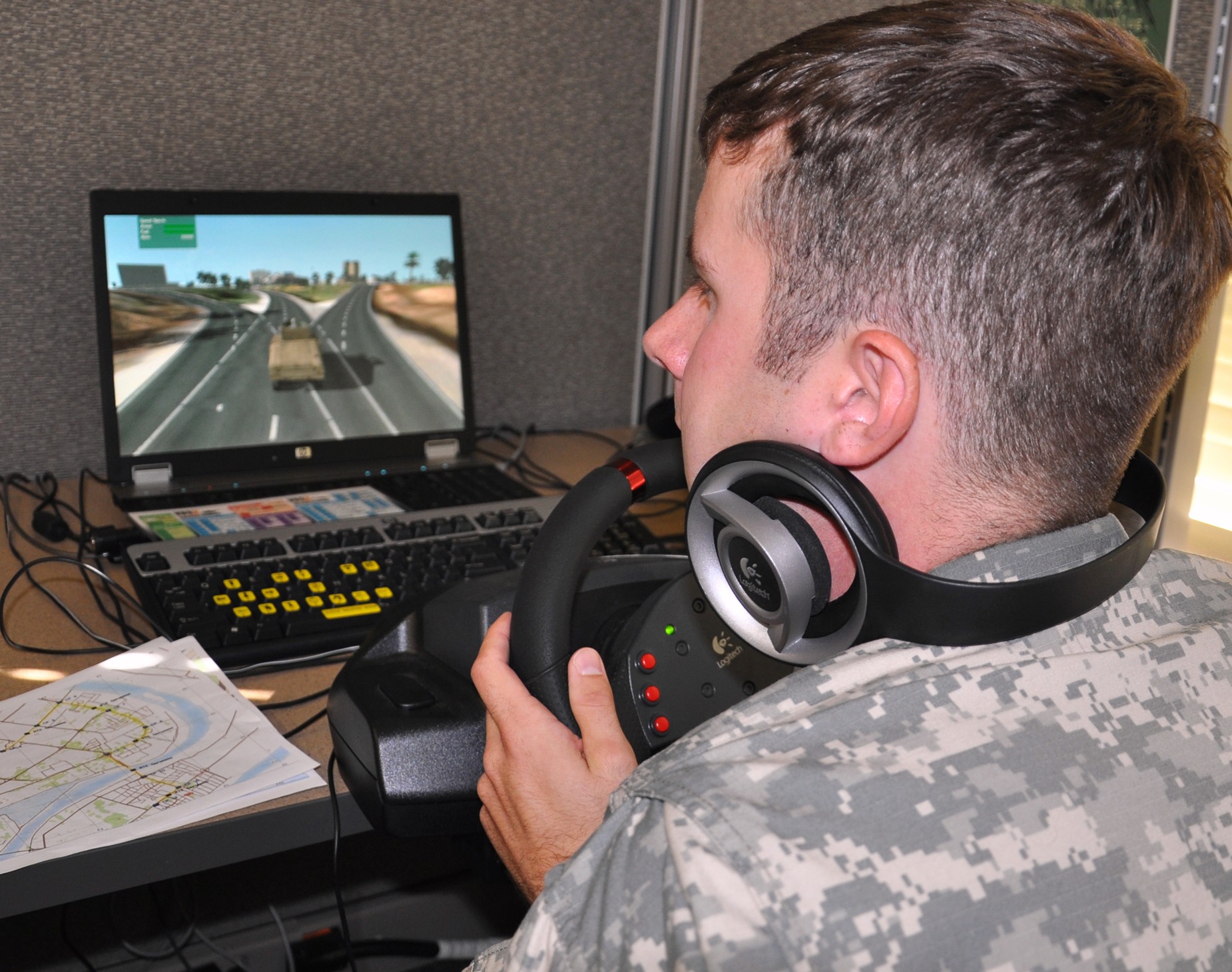FORT SAM HOUSTON, Texas -- The art of war is getting a high-tech spin at Fort Sam Houston's Battle Command Training Center as Army Medical Department Soldiers use state-of-the-art interactive computer programs to fight and train on virtual battlefields.
Military modeling and simulation dates back thousands of years to when ancient Sumerians used warrior figurines to plot strategy. Vikings from the 5th century used a chess-like game called Hnefatafl to hone their military intellect. The U.S. Army and Navy added war games to their training in the late 1800s.
Located in a somewhat nondescript building near the Quadrangle, the BCTC has been training Soldiers to become better leaders for more than a decade, as their systems specialists use interactive, three-dimensional training platforms to allow Soldiers to participate in first-person, multiplayer simulations.
"The purpose here is to get students to run through simulated battlefield scenarios and see how they react and work together as a team," said. Staff Sgt. James A. Zamarripa, an instructor for the Advanced Leadership Course at the Fort Sam Houston NCO Academy.
"Most of the NCOs here will be in leadership positions and it would be easy for them to fall into a brigade or battalion support division after taking this training."
The BCTC staff recently accomplished a major training objective, according to Bulent Sencalar, assistant site manager and senior computer network technologist. The BCTC's team of systems specialists were able to connect two training systems, Virtual Battle Space 2 (VBS2) and the Army Battle Command System (ABCS) Force XXI Battle Command Brigade and Below. These systems are used in training scenarios that simulate missions where U.S. troops engage in tactical and full spectrum operations.
VBS2 is an interactive, three-dimensional training platform that allows Soldiers to participate in a first-person, multi-player simulation. Scenarios can be fully customized to meet the needs and requirements of the training audience.
FBCB2 is a digital system mounted on many combat vehicles used to track forces on the battlefield. It provides real-time situational awareness and also serves as a communications interface.
While the two systems had been used simultaneously to achieve a high level of realism during the exercises, interactivity between the systems was not there. The connectivity between the systems now allows for a higher level of realism so Soldiers can view and track vehicles interacting in VBS2 in real time.
"We want our guys learning good Soldier tactics," said Joel Williams, BCTC director. "By working with the gaming simulations, we can cut down on a huge amount of paperwork and expense. Before, if we wanted to change a training exercise, we had to go up through the channels and it could take years to change. Now we can do everything in house."
"We can custom build the missions, depending on the needs of the NCO Academy," Sencalar said. "Any unit that needs training, we can provide it."
"Commanders and Soldiers want to know that we can support them quickly and effectively," Williams added. "It's important that some of our senior medics learn to patrol a building, but it's also important for them to know how to evacuate a building."
Soldiers from a recent ALC class found the exercise very realistic, even for those who had been deployed and in similar situations before.
"It brought back a lot of memories," said Staff Sgt. Mariano J. Hoffpauir, from the Reynolds Army Community Hospital at Fort Sill, Okla. "My training and instincts really came into play. My real-life experience helped me because I've seen these scenarios and know what mistakes can be made. I knew how to correct it in this scenario. For those who haven't deployed yet, they get a chance to see what can be expected during a convoy or defending a forward operating base."
"A typical convoy in a training scenario is four to six vehicles. In real life, you wouldn't want to go outside the wire with less than four vehicles," Zamarripa said. "The students have to be able to react to different scenarios and keep each other out of trouble. There are IEDs, snipers and different obstacles along the way. As they encounter these, they need to make sure everyone in their vehicle and the convoy knows what is happening.
"They'll also send the information up the chain of command," Zammarrita said. "They'll let the squad leader know, then it goes to the platoon sergeant, then to the company and then up to the battalion. We want to make sure the information flows both up and down.
"The battalion gets info from the brigade who will give them the actual instructions on what is to be done," Zammarrita added. "Some decisions will be made at lower levels.
When the squads report information about IEDs, the brigade will mark those on their maps, so others Soldiers know what to expect. Soldiers get rotated through most of the positions and the cells, so we can get a good variation on the training and all the Soldiers can get a good grasp on what we are doing."
"When the exercise began, people were loose and joking around a bit, but as the scenario got more intense, the people did as well," Hoffpauir said. "This training put us in a half-reality, half-fantasy setting to help us survive in the battlefield. People worked as a team with respect to what their roles were. I would highly recommend this training module for anyone who has or hasn't been deployed, just to get a feel for the scenario."
"The BCTC staff continues to find new and cutting-edge ways to ensure that the training here is realistic, valid, and beneficial to the Soldier," Sencalar said.




Social Sharing